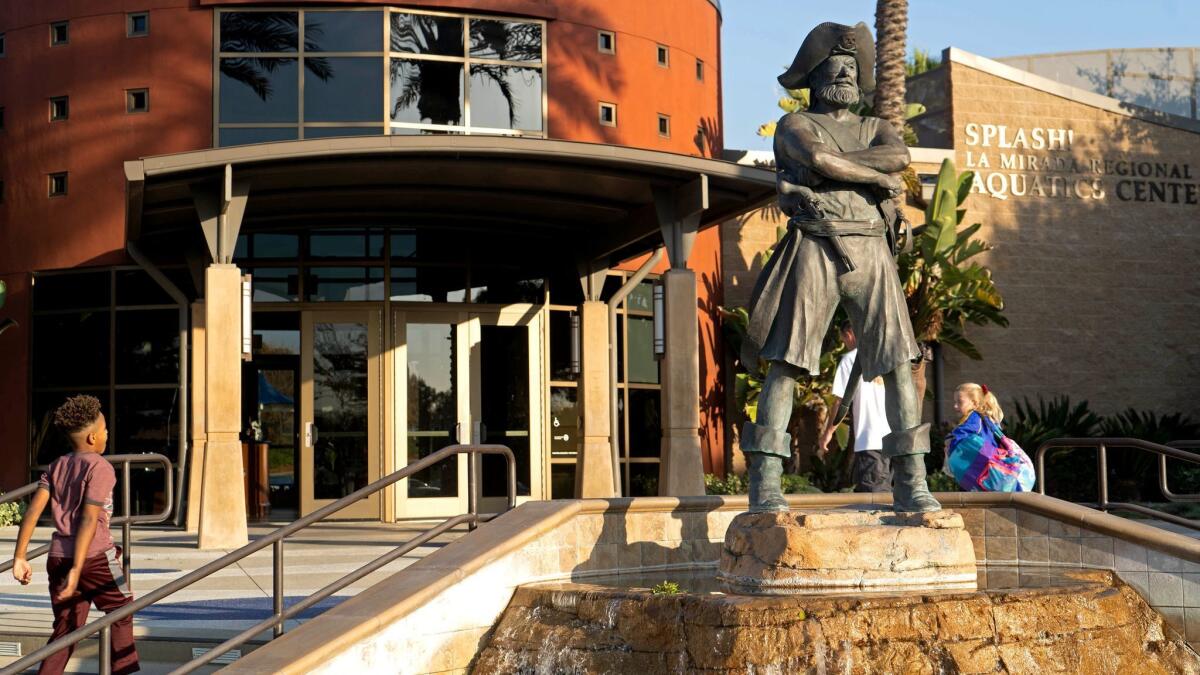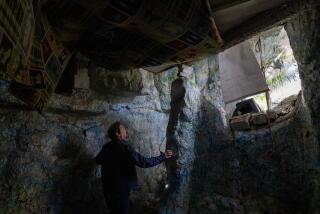Neighborhood Spotlight: Olive groves put La Mirada on the map

La Mirada got its start when Andrew McNally, the map and atlas magnate who made his fortune producing globes and guides for 19th century America, left Chicago and in 1888 bought 2,300 acres of Southern California ranchland.
He devoted 700 of those acres to his own pastoral haven. And though he cultivated citrus and olive groves rather than cattle or sheep, he built an expansive home he called Windermere Ranch.
His olives became wildly popular, so much so that to meet demand he built an olive oil processing plant at the ranch. And his adjacent personal train station, which he named La Mirada, gave the olives their brand name.
Not content with being one of the foremost producers of olive oil in California — at one point accounting for 15% of the state’s output — McNally and son-in-law Edwin Neff soon began planning development of a rural retreat for the wealthy, to be built on the remaining 1,600 acres.
In 1896 they incorporated La Mirada Land Co. and began hawking 20-acre lots in what they envisioned as a thoroughly modern luxury neighborhood, with swimming pools, an artificial lake and a clubhouse.
As the Los Angeles Times reported back then, McNally and Neff hoped to “attract a congenial and aristocratic population, where all the vagaries of fashion and the extravagance of wealth can be indulged in without intrusion.” And, to guarantee the financial pedigree of would-be residents, they required that buyers spend at least $250,000 to improve their parcels and live there at least part-time.
Their dream of a country gentlemen’s paradise in the shadow of olive-covered hills ended with the collapse of the Southern California real estate market at the close of the 1800s. McNally’s olive oil and citrus empire, however, would endure until the 1950s.

In 1953, his heirs sold everything but the family home and the 10 acres on which it sat to developers; the Neff Estate remains a city-owned park and museum. On the remaining 2,000-plus acres, a planned city arose, one of the first in the country. Instead of catering to the wealthy, as had been McNally’s plan a half-century earlier, La Mirada was built to house the burgeoning postwar middle class.
One thing remained constant, however: The developers heavily marketed the city’s connection to the olive industry, even going so far as to include olive trees in the frontyard landscaping of some tracts.
Neighborhood highlights
Affordable suburban living: With homes starting in the mid-$500,000s, La Mirada is one of the region’s more economical options for first-time home buyers or those on a budget.
Experience history: Although most of the olive trees are long gone, a remnant grove endures across from the La Mirada Civic Center.
Bedroom community: With a nearby Metrolink station and easy access to the 5 Freeway, commutes to downtown and beyond are, if not easy, at least manageable.
Neighborhood challenges
Peace and quiet: Although its quiet suburban vibe may be great for families or others looking for a slower pace of life, singles and those who crave big-city living may want to take a pass.
Expert insight
La Mirada is home to Biola University, and Joe De La Torre of Legends Realty said the students have a big effect on the city’s housing market.
“A lot of juniors and seniors rent homes off campus, which raises rent prices throughout La Mirada,” he said. The climate is great for landlords but pricey for renters.
La Mirada’s other draw is its location, he said. Set between Los Angeles and Orange County, the community offers a nice halfway point for dual-income families working in different areas.
Market snapshot
In the 90638 ZIP Code, based on 24 sales, the median price for single-family homes in November was $586,000, up 8.5% year over year, according to CoreLogic.
Report card
Nine of 11 public schools in La Mirada scored above 800 in the 2013 Academic Performance Index, and two scored above 900: Gardenhill Elementary at 915 and Escalona Elementary at 907.
Other standouts include Eastwood Elementary at 877, La Pluma Elementary at 873 and Los Coyotes Middle School at 858. La Mirada High, the city’s largest high school, scored 779.
Times staff writer Jack Flemming contributed to this report.






